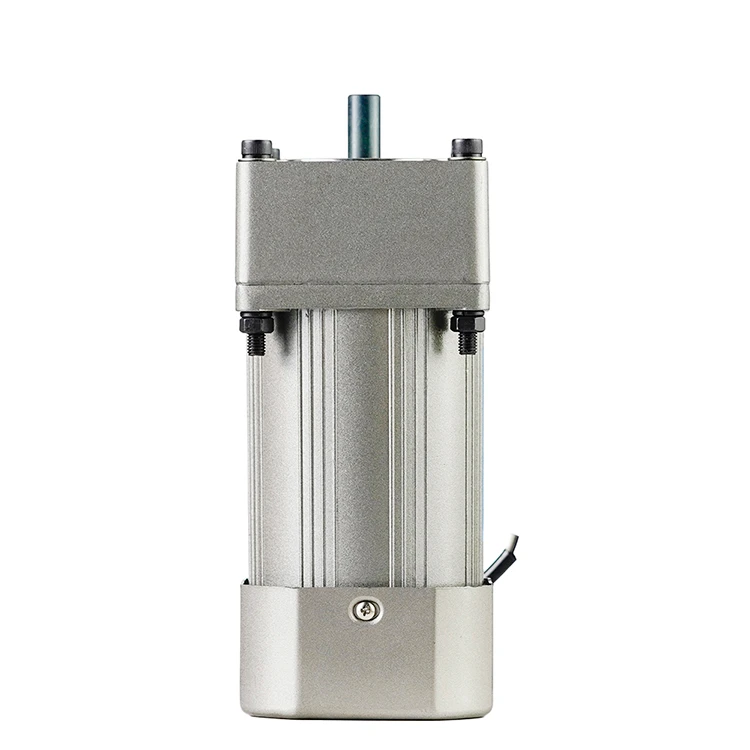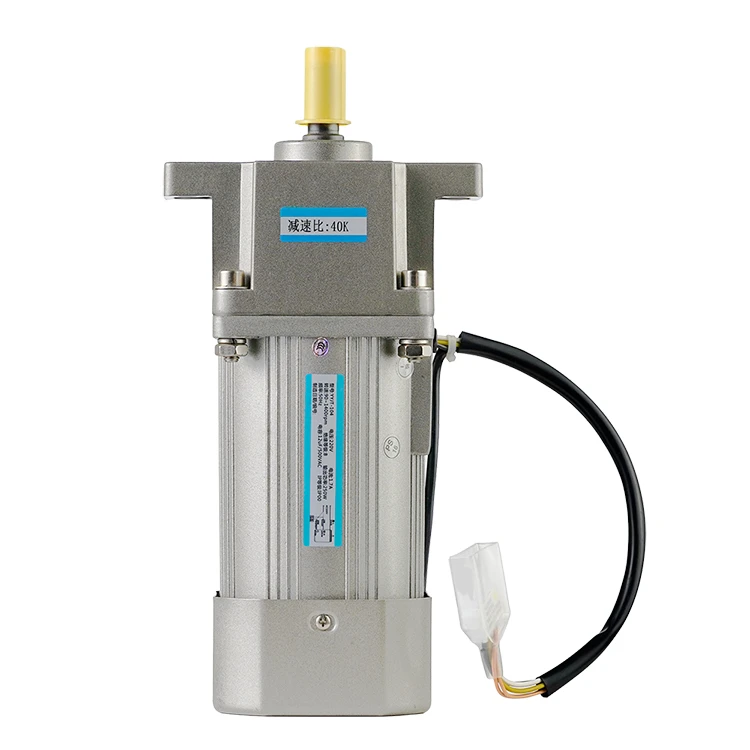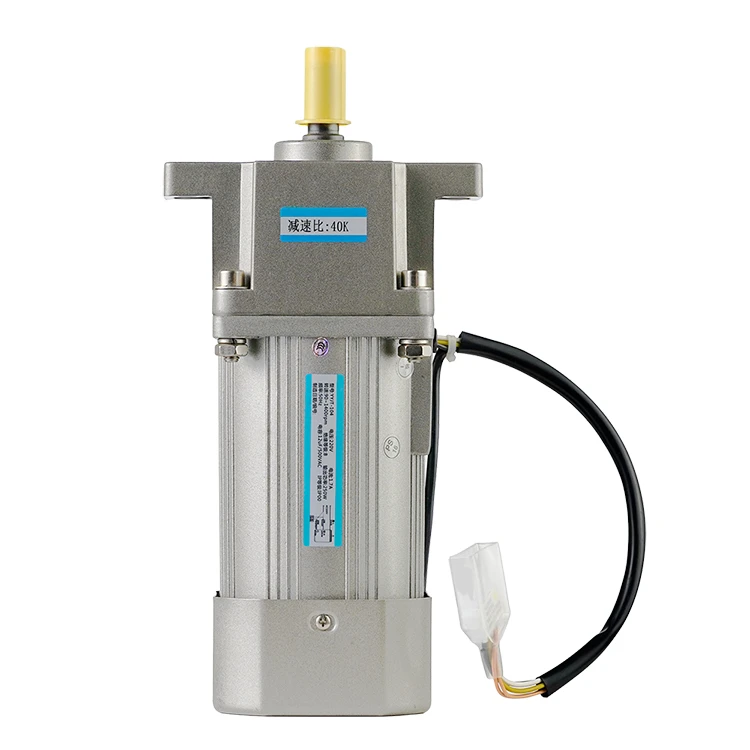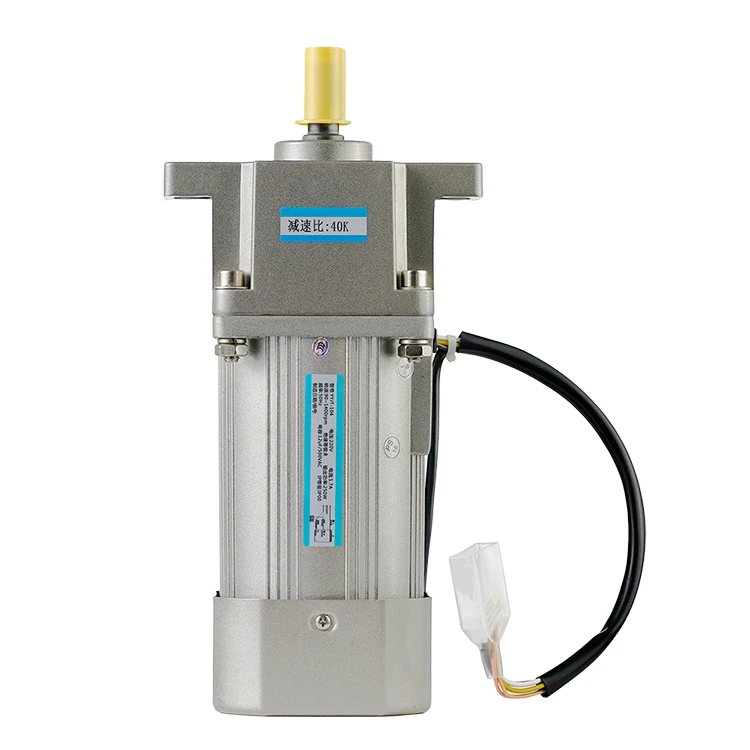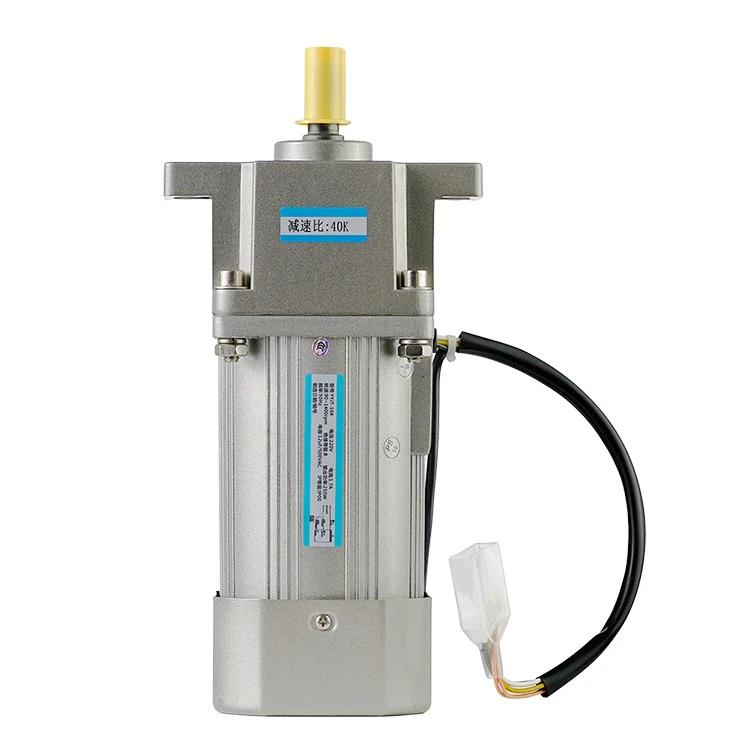Output Torque of Gear Motor
2024-09-19 09:57:47
The output torque of a gear motor is one of the most significant parameters influencing its performance in mechanical and industrial applications. Torque refers to the rotational force exerted by the system, which is critical for driving mechanical loads in various industrial applications, including conveyors, robotics, and other automation systems. This article delves into the output torque of gear motors, examining the factors affecting it, calculation methods, and its application in mechanical systems.

Understanding Torque in Gear Motors
In any gear motor system, torque is the force that causes rotation around an axis. In practical terms, torque is what allows machines and mechanical systems to lift, move, and exert force on objects. For gear motors, torque is critical because the primary function of a gear motor is to convert high-speed, low-torque power input into lower-speed, higher-torque output. This transformation enables machinery to operate efficiently while handling heavier loads or performing tasks that require significant force. Gear motors accomplish this by utilizing gears of different sizes to alter the rotational speed and torque of a motor. The reduction in speed allows for an increase in torque, which is essential for applications that require force over speed. The output torque of a gear motor can be calculated and optimized by considering several factors, including the motor power, the gear ratio, and the efficiency of the system.
The Formula for Output Torque Calculation
To understand the output torque of a gear motor, we refer to a basic formula:
T = P / ω
Where:
- T represents the output torque (in Newton-meters, N·m),
- P is the output power of the motor (in Watts, W),
- ω is the angular velocity of the motor (in radians per second, rad/s).
This formula highlights the relationship between motor power, speed, and torque, providing a direct method of calculating the output torque of a system. Torque increases as speed decreases for a given power level. Gear motors leverage this principle to enhance torque by reducing the speed of the input shaft.
Gear Reduction Ratio and Its Impact on Torque
The gear reduction ratio plays a critical role in determining the output torque. The gear ratio represents the relationship between the speed of the input shaft and the output shaft, and it is a crucial factor in modifying torque.
For instance, a gear motor with a high reduction ratio will significantly decrease the speed of the output shaft while simultaneously increasing torque. The output torque is multiplied by the gear reduction ratio, assuming minimal losses due to inefficiency. Thus, higher gear ratios generally result in increased torque output, making the system more capable of handling heavy loads.
This relationship can be represented by another common formula for calculating torque in gear motors:
T(output) = T(input) × Gear Ratio × η
Where:
- T(output) is the output torque.
- T(input) is the input torque.
- Gear Ratio is the ratio between the input and output gears.
- η is the efficiency factor of the system (usually expressed as a percentage).
This formula illustrates that the output torque is a function of the input torque, multiplied by the gear ratio, and adjusted for system efficiency. Efficiency losses due to friction, heat, and mechanical imperfections reduce the available torque at the output shaft.
Efficiency of the Gear Motor
The efficiency of a gear motor refers to the percentage of input power that is successfully converted into useful output torque. Inefficiencies are generally caused by friction between gears, lubrication losses, and mechanical deformation under load. A gear motor with high efficiency will have minimal energy losses, which results in a greater portion of the input power being converted into torque.
Efficiency is a key consideration in the calculation of output torque. In real-world applications, even the best-engineered systems experience some degree of inefficiency, which must be factored into any torque calculation. The efficiency factor, denoted as η, typically ranges from 85% to 95%, depending on the quality and design of the gear motor. Higher efficiency systems are more desirable, as they ensure more consistent and reliable torque performance under load.
Factors Influencing Output Torque
The output torque of a gear motor is influenced by several factors, which include:
- Gear Ratio: The gear ratio has a direct impact on the torque output. A higher gear ratio results in higher output torque, but at the cost of reducing speed. For applications that prioritize torque over speed, a higher gear ratio is beneficial.
- Motor Power: The power of the motor driving the gear motor directly affects the available torque. A higher-powered motor will generate more torque, assuming all other factors remain constant.
- System Efficiency: Efficiency losses in the system reduce the effective output torque. Ensuring proper lubrication, reducing friction, and using high-quality materials can enhance the efficiency of the gear motor and improve torque performance.
- Load Characteristics: The load on the system also plays a role in determining the output torque. Heavier loads require greater torque, which may necessitate higher gear ratios or more powerful motors.
- Speed: The angular velocity of the motor affects torque. As speed increases, torque decreases, assuming constant power. Gear motors address this by reducing the speed, thereby increasing torque.
Practical Applications of Gear Motor Torque
Understanding and calculating the output torque of a gear motor is essential in numerous industrial and mechanical applications. For example, in the automotive industry, gear motors are commonly used in transmission systems to manage the torque required for acceleration and deceleration. In conveyor systems, gear motors allow motors to drive heavy loads at controlled speeds, ensuring the efficient operation of the entire system.
Additionally, robotics and automation systems often rely on gear motors to provide the necessary torque for precise movements and operations. The ability to fine-tune torque output is critical in applications where accuracy and control are paramount.
Conclusion
The output torque of a gear motor is a vital parameter that determines its performance and suitability for specific applications. By understanding the relationship between motor power, gear ratio, and efficiency, you can accurately calculate and optimize the torque output for various mechanical systems.
See What Lunyee Can Do For You
Contact Us
- 8619149417743
- +86-0371-5562 0274
- [email protected]
- Zhengzhou, Henan Province, China
- Mon-Fri: 9:00 - 18:00
